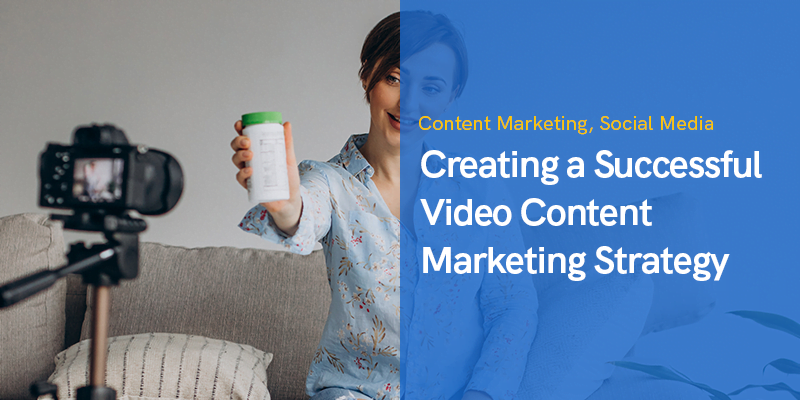
Mind Mapping for Business: Streamlining Meetings and Strategic Planning & Video Content Marketing Strategy in 2024
Table of Contents
ToggleMeetings and strategic planning are critical activities for any business. But without proper organization and clarity, they can easily become muddled, inefficient, and frustrating.
This is where mind mapping comes in handy! Mind mapping is a visual thinking technique that structures information radially around a central topic or idea. The maps utilize branches, colors, symbols, and words to connect concepts.
Mind mapping improves comprehension, memory retention, and productivity.
Integrating mind mapping into your business can optimize meetings, strategic planning, and other functions.
This article will explore mind mapping basics and provide actionable tips to implement mind mapping for organizational success.
How Do Mind Maps Work?
Before diving into applications, let's cover what mind maps are and how they work.
A mind map starts with a central theme in the middle of the page. Main subtopics and ideas branch off from this central concept. Categories continue to branch into more specific details.
For example, a company strategy mind map might start with “Company Vision” in the center.
Core values and objectives would branch off from the center. Goals for the year would stem from those branches, and individual tactics would branch off the goals.
Mind maps utilize:
- Hierarchical structure – Main topics cascade into layered details
- Concise labels – Keywords name each branch
- Color coding – Colors differentiate categories
- Visual organization – Structure and placement convey meaning
- Imagery – Symbols, doodles, and pictures code information
This visual network displays relationships and triggers connections that text alone cannot.
Research shows mind mapping boosts comprehension, creativity, recall, and transfer to long-term memory. You can use an online mind map maker to get started.
Streamline Meetings with Mind Maps
Now let's explore ways businesses utilize mind mapping. First, let's look at meetings.
Meetings keep teams aligned and work flowing smoothly.
But they can also easily turn into aimless discussions with vague follow-up plans. Mind mapping solutions include:
Set the Agenda
Start by mind mapping the purpose and desired outcomes of the meeting. Branch out agenda topics and timing. Share this with attendees so everyone is on the same page. This prevents tangents.
Capture Notes Visually
During the meeting, record key discussion points on a mind map template. Use branches to distinguish ideas. Add symbols and colors to category information. This helps cement the learning and make connections.
Clarify Action Items
Note action items on branches extending from the relevant topics. Include owners and due dates to ensure accountability. Visual branches keep tasks organized and accessible.
Share Recaps
Email the final mind map to recap the meeting with attendees. People can review details at their own pace. Mind maps improve information processing and retention. Using mind mapping techniques before, during, and after meetings will help keep them focused and productive.
Enhance Strategic Planning with Mind Maps
Beyond meetings, mind mapping is also invaluable for crafting strategic plans. Consider how it can improve the following elements of strategic planning:
Brainstorm the Current State
Start strategic planning by brainstorming a mind map of your company's current state, strengths, challenges, goals, and other factors. This provides helpful context.
Organize Research Findings
Next, mind map key findings from research, financial analyses, market data, customer feedback, and other inputs. This distills insights into an organized format.
Connect Goals to Tactics
Map out priorities, objectives, and growth strategies. Use branches to link goals to corresponding implementation tactics. This creates alignment.
Visualize the Full Plan
Finally, integrate analyses, findings, goals, and tactics into a consolidated strategic plan mind map. The visual format facilitates big picture thinking.
Mind mapping is invaluable for clarifying complex information and gaining whole-picture visibility. Simplify your next strategic planning process with this visual technique.
10 More Business Uses for Mind Mapping
Beyond meetings and strategy, mind mapping boosts productivity across your organization. Consider these applications:
- Project management – Map out plans, including phases, tasks, owners, and timelines
- Process improvement – Analyze workflows and brainstorm optimizations
- Product development – Conceptualize features, customer needs, and technical considerations
- Content strategy – Outline content calendars, editorial themes, and content types
- Research analysis – Organize data, findings, insights, and recommendations
- Team building – Design future team structures and roles
- Training – Structure workshops, seminars, and onboarding programs
- Presentations – Mind map your storyline and talking points
- Reporting – Summarize findings, analyses, conclusions, and implications
- Personal productivity – Outline daily/weekly priorities and activities
The flexibility of mind mapping allows it to streamline virtually any business process. Help your organization think more clearly and critically with mind maps.
Choosing Mind Mapping Software
To leverage mind mapping at your company, you need the right software. Here are key features to look for:
- Collaboration – Ability to co-edit maps in real-time
- Sharing – Options to share view-only versions with others
- Templates – Pre-made templates for common uses
- Multimedia – Support for images, videos, links, attachments
- Apps and integrations – Ability to sync with other platforms
- Security – Permission settings to control access
- Analytics – Usage metrics to track adoption and ROI
Compare the capabilities of the leading options to find the best fit.
Provide training to ensure teams utilize the software effectively. Periodically assess usage data and solicit feedback to refine your mind-mapping program.
Getting Started with Mind Mapping
Mind mapping takes some practice to master. Follow these tips to get started:
- Start simple – Don't overload your first maps. Get comfortable with basic branching.
- Use keywords – Avoid long sentences. Distill concepts into concise key phrases.
- Limit map size – Aim for main branches numbering between 5-9. Go broad, not deep.
- Add visuals – Incorporate colors, symbols, icons, and images. Leverage visual memory.
- Focus on structure – Placement should convey relationships and hierarchy.
- Map digitally – Use software to easily edit, rearrange, and evolve maps over time.
- Collaborate – Co-create maps with team members. Gain new perspectives.
- Use consistently – Building mind mapping habits boosts fluency.
With some experimentation, mind mapping will start to feel natural. You'll unlock your visual thinking superpowers!
Have you used mind mapping techniques in your organization? What benefits did you realize? Share your experiences and best practices in the comments below!
Planning a Video Marketing Strategy
Video marketing is a new content marketing strategy that is gaining popularity fast. Videos can help organizations build stronger relationships with their audiences.
New data for 2022 shows that 86% of organizations leverage video marketing to increase sales. 92% of marketing teams believe videos are a marketing tool that must be prioritized.
They create a better way for increasing engagement.
Digital video marketing informs audiences about products and is useful in their purchase decision-making processes. To get the best success, marketers need to create workable video content marketing strategies.
Decide whether your business needs to adopt a video content marketing strategy
Creating a basic video campaign can cost about $1,200, while a premium video campaign can cost up to $50,000 or more. The benefits, however, outweigh the cost in a big way.
Before you add a video to your content strategy, you need first to weigh the pros and cons. It is not every business that requires to include a digital video marketing strategy in its campaigns.
Some need to use other marketing tools to grow their audiences first.
Some other types of businesses need to seriously consider using videos to significantly boost sales.
Here are some business sectors that cannot ignore using high-performing video content in marketing.
- Manufacturing: 81% of marketers in this sector use video content to explain to customers how their products work and their benefits.
- Real estate: Real estate organizations leverage high-performing video content to gain traction and convince customers to make a purchase decision.
- Finance: This sector uses explainer videos to walk users through various transaction-making processes, such as deposits and payments.
- E-commerce: E-commerce requires an effective digital video marketing strategy for a better shopping experience.
- Healthcare: Healthcare sector has different custom healthcare solutions, such as health insurance providers, doctors, public health departments, and nutritionists. Video explainers are important to them when walking customers through creating a detailed picture of the smallest details.
Determine the purpose of your video marketing strategy and clarify what goals you want to achieve
Purpose can be multi-dimensional depending on the level of growth your company has achieved.
If you are a startup, you need to add videos to your content strategy to help you build a strong contact list. You can use free stock video footage to create compelling stories
Another company might have a long list of contacts but a low level of product awareness. Another marketer may want to do a sale promotion to increase sales.
If your purpose is to explain how a product works, you may need to learn how to record a screen with a sound to make your video easier to understand. Another use is when writing a tutorial as part of your video content strategy. You will keep them informed when you show them how you do things.
Success in your strategy requires the use of strong video content marketing metrics measuring tools from your team.
They need to know engagement level, conversion rate, click-through rate, view duration, and audience growth. These goals are important but you need to make them clear. If you want to increase product awareness, be clear about how you will do it, where, when, and to who.
Different categories of video purpose
- Educating and informing audiences: Your video content should help audiences understand your products. The more products there are in the market, the more choices consumers get. Information creates a positive perception of a product. The marketing team can tell from the video content marketing metrics whether the content is creating a good perception in the minds of viewers.
- Remaining competitive: Competing is increasing daily and it is never easy to stay above the competition.
- Increasing conversations: Videos not only keep your audiences informed but also help convert them to customers. If this is your purpose, you need to learn How to craft your video content marketing strategy to convert viewers to customers.
- Ranking higher on search engines: Your purpose could be to rank higher on search engines by use of keywords.
Types of marketing videos that exist for various customers
During any phase of growth, your business will handle different types of customers. Some will be entirely new in your business field, while others will be drawn from your competitors.
Research shows that 50% of clients move to your competitors because they perceive the competitors are offering better products or services.
Before creating a marketing video, you should create better ways to define your buyer’s persona based on research.
You also need to research information that will provide you with text video content creation tips to help you create videos fast and without much effort. Before purchase, customers are crucial to the growth of your business.
You should focus on creating awareness videos for this type of customer. They will begin to build trust with your brand and will eventually make purchase decisions. Here are other types of consumers:
- Window shoppers who compare products from different brands.
- Discount seekers who seek to save money on discounts
- Researchers who are looking for the best buying options
- Impulse buyers to buy first and think later
- Undecided customers who are not sure of what they want
- Migrating/dissatisfied customers seeking better brands
- Loyal customers who stick with your brand no matter what happens
- Referral customers who learn about your brand from other users
- Lapsed customers who moved away but may still consider returning
When defining your buyer’s persona, you should have in mind all these types of customers.
The next thing will be to define the type of video to use to reach them. You may decide to use any of these types of marketing videos.
Explainers
These types of videos tell the type of problem the product is intended to solve. Its purpose is to help customers learn more about the product.
Tutorials
These videos explain to customers how to use products. It helps build trust and brand credibility.
Case study videos
Their purpose is to explain the successful use of products. That is, how the products have benefited various categories of customers. It creates a conviction in customers that the product will meet their needs.
Educational
Marketers choose a topic that is relevant to the brand and create information that educates audiences.
Features
They highlight unique features of specific products that make them different from other competitor products.
How to figure out which type of content fits your business the most
Although there are different types of marketing videos, your video production team needs to choose the best type to use. An explainer video may fit better with a manufacturer than a retailer.
If you choose to use social media video marketing strategy, you need to understand each social media channel has its special features. Due to this, you cannot apply a video content marketing strategy to all the platforms in the same manner.
The main consideration to make when deciding the type of video to use is the purpose of your campaign. If you want to increase contact lists, you can choose to use educational or explainer videos.
The video marketing funnel you choose should help guide the customer until they decide to subscribe or give their contact details. Your target market or demography will also determine the type of video content to create.
Where content marketing team can get references for their videos
Video marketing may look complex at the beginning but a lot of information that your video production team can use is available from different sources.
They only need to explore the sources and use the ideas learned to create attractive video content.
Learn for your competitors
Your competitors are always creating new videos to keep them on top of the market. Visit their website and other channels often to get inspired by their content.
Look beyond your industry
You could be in the health industry but get ideas from the manufacturing industry too. Get inspired by their video marketing funnel and follow their customer journey.
Use hashtags and keywords to search on social media
Social media is full of micro-videos that can inspire your video production team.
Browse YouTube videos
Nearly every organization posts marketing videos on YouTube. Keep your eyes on videos that can add value to your content.
Learn from your saved videos
Some of your past videos might have recorded significant success. Learn from them to create better future videos.
Learn from TV commercials
TV channels air video commercials daily. Use them as inspiration for your content.
How to choose the right platforms for distribution of your video content
There is a long list of video distribution channels that you can use.
You need to understand the online behavior of your target audiences to decide the most relevant platform to reach them. The main channels used by marketers are
- Emails
- Blogs
- Websites
- Social media
- Video hosting services
Some of the platforms can be more relevant than others, depending on the season, product, and target market.
Whether you choose to use social media, blogs, paid media or other platforms, it is necessary to consider these points.
- Numbers: Success in marketing is highly dependent on numbers. Choose a platform that will give you the advantage to reach big numbers.
- Platform infrastructure: The platform needs to be well networked, managed, and resourceful.
- Ability to monetize: The platform should allow marketers to use the content for monetization.
- Streaming capacity: The platform must have enough plugins or applications that allow video streaming.
- Cost-effectiveness: The platform should offer reasonable charges
- Video analytics: It should provide detailed and quality video analytics
- Mobile gadget compatibility: Users should be able to use the platform on both mobile phones and computers
Conclusion
Video content marketing provides organizations with multiple benefits. They help retain users on company pages for longer. Videos attract better user attention because they are captivating. Companies use them to improve their SEO strategies and to increase conversion rates.
Effective video content helps increase revenue and product awareness. Marketers need to consider leveraging different video marketing strategies to improve business visibility online.
Recommended Posts

10 Best Tools for Content Sentiment Analysis in 2023
April 29, 2024


